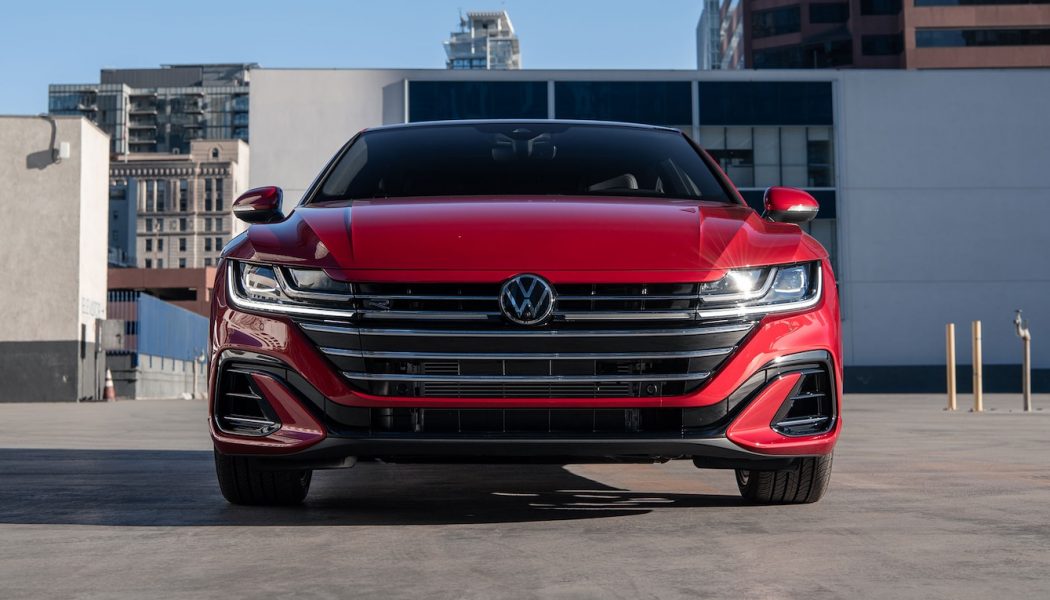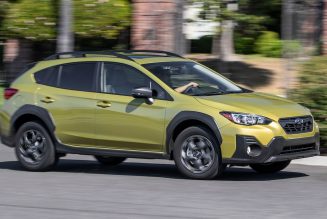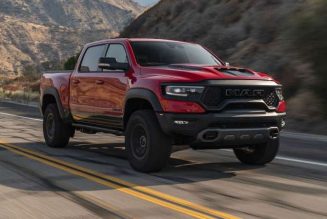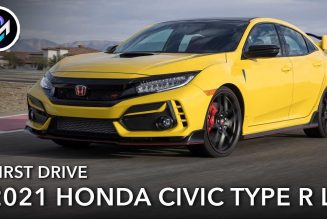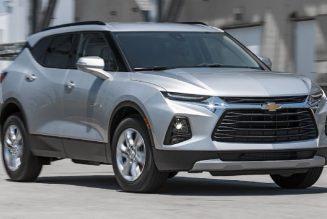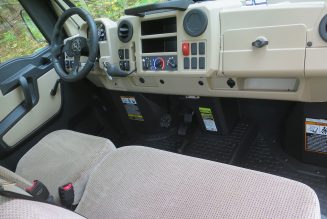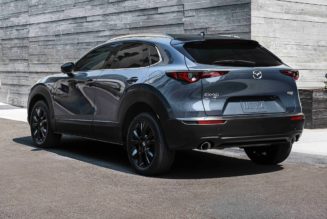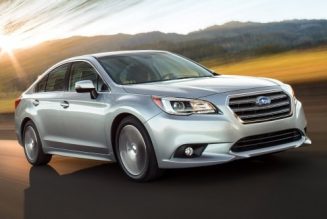Volkswagen Arteon Full Overview
I don’t know about you, but I haven’t left home as much as I’d like to over the past few months. The business-casual attire I used to don before reporting to MotorTrend HQ goes largely unworn. Instead, my casual-casual clothing—pajama shorts, soft tees, cozy hoodies, and the like—is on constant rotation. Part of me enjoys the lazy functionality of this new uniform, but another misses having reasons to get dressed up, to not sit inside looking like a schlub.
Try on the Volkswagen Arteon, and you’ll find yourself in a peculiar balance between these modalities. The brand’s flagship sort-of-sedan makes you a point of fashionable focus while not asking for—or providing—any more involvement than pajama shorts or fuzzy slippers. Can that appeal more than a four-wheeled outfit bearing a more chichi label? Or should you just abandon pretenses and get some commodity car?
What’s the Best-Looking Volkswagen?
Usually when a car gets updated after only a year, it’s a red alert for trouble, but in the Arteon’s case it’s fortuitous timing—its Euro-market equivalent was due for a face-lift, so Volkswagen brought the changes here.
What didn’t change is that the Arteon’s exterior is seriously good looking. It doesn’t need King’s Red paint, R-Line styling, or the LED mustache that comes with the SEL Premium package to draw stares. Through my time with the car, I found myself admiring it on approach and walking away backward to spend a moment exploring its design. The clamshell hood and flared wheel arches are among details that make the Arteon the best-looking vehicle in Volkswagen’s lineup. It’s nearly 16 feet of haute couture, more elegant than any sweater I own and eye-catching without resorting to gaudy shirt graphics.
What’s the Arteon Like to Drive?
Beneath its swoopy sheetmetal, the Arteon’s chassis and powertrain remain unchanged. That means a 268-hp, 258-lb-ft turbo-four displacing 2.0 liters and connected to an eight-speed automatic transmission. The SEL Premium model is equipped with all-wheel drive, while lower trims are front-wheel drive. Fuel economy is fine but not impressive; the EPA rates it at 24 mpg combined with AWD and 25 mpg with FWD.
My eyes popped when I saw the acceleration runs our test team recorded at the track: 0-60 mph in 6.1 seconds and the quarter mile in 14.6 seconds at 94.2 mph. Why such surprise? Those numbers rival the last Golf GTI we tested. Braking felt soft at first but became reassuringly firm and accurate deeper in the pedal stroke. Stopping from 60 mph took 122 feet, trailing the Nissan Maxima and Toyota Avalon by about half a car length. Its 26.5-second, 0.66g figure-eight lap time is nearly identical to those cars and to the driver-pleasing Mazda 6.
But in the real world the Arteon doesn’t feel hot hatch fun or luxury sedan plush. Power doesn’t come on eagerly; you need to get deep into the pedal for real acceleration. Most shifts are smooth, other than some clunky hesitation when going for a pass. The light, low-feedback steering is tuned for comfort, seemingly true of the suspension, too. Ride quality is good on smooth roads; less so on sudden impacts and undulations. Switching between Sport, Comfort, and Eco modes produced little discernible effect.
Does the Arteon Have a Nice Interior?
Once chided as seeming like an extra-large Jetta, the Arteon’s interior gets a rework for 2021. The entire dashboard panel is new, adopting design and trim that looks more premium. Adding to that are the standard 10.3-inch digital gauge display and available 30-color ambient lighting system. The new steering wheel has pronounced thumb detents and flattened sides that made it great to grab. Cushy and supportive seats with heating and ventilation kept me comfortable behind the wheel. Appearances are improved, yet like in a Jetta, things feel cheap beyond primary touchpoints.
Despite running Volkswagen’s latest MIB 3 infotainment, the 8.0-inch touchscreen remains, and it looks small and grainy by today’s standards. It’s not placed well, requiring too much focus away from the road. The backup camera’s resolution is frankly terrible, and a 360-degree view system is conspicuously unavailable. At least wireless Apple CarPlay and Android Auto are now standard. However, the tinny, low-fidelity Harman Kardon audio system isn’t worth upgrading for. Like in other cars, capacitive buttons on the steering wheel and climate controls seem techy but become a nuisance; they’re not as foolproof as real buttons.
How Much Space Is in the Volkswagen Arteon?
Crazy as it sounds, the Arteon’s hatchback cargo door could make it a crossover competitor. Consider this: There are 27.2 cubic feet of space behind the second row. Meanwhile, there are 28.1 cubic feet in the back of Volkswagen’s new Taos subcompact SUV. Fold the second row in the Arteon, and capacity expands to 55.0 cubic feet, while the Taos offers 66.3. It’s not exactly a parallel comparison, but the point is that the Arteon’s cargo space is immense for something resembling a sedan.
We’ll keep dreaming about the even more capacious and beautiful Arteon wagon offered overseas, but that likely has the same odd oversight: The glove box is too small to hold the owner’s manual. A bin under the armrest and tray ahead of the shifter can fit daily carry items, but those aren’t very large, either.
Second-row spaciousness remains excellent. I’m close to 7 feet tall and could squeeze in behind the driver’s seat adjusted for me. With an average-sized driver up front, I could stretch out. I’d have to hunch, though, as the sloping roofline impedes headroom a bit. Call it a sacrifice for style.
Is the Volkswagen Arteon Worth It?
A sacrifice for style—that sums the Arteon up. Pricing starts at $38,190, an increase of $1,175 from last year, and our loaded test car carried an as-equipped MSRP of $48,585. At that price point, there are so many vehicles more decided in their missions. Sporty ones like the Alfa Romeo Giulia. Luxurious ones such as the Lexus ES. Spacious crossovers like the Mercedes-Benz GLB. If what you really want is a simple, pajama shorts driving experience, get a Honda Accord or Subaru Forester and save thousands.
Still, I found some magic in the Arteon. Someday, someway, I’ll return to the office and have a reason to dust off those work clothes I haven’t been wearing. Until then, I could yank on sweatpants and slippers, tug a beanie over my bedhead, hop in the Arteon, and transform into a runway model. Few vehicles combine casual manners with designer style like this one.
| 2021 Volkswagen Arteon 4Motion R-Line | |
| BASE PRICE | $44,950 |
| PRICE AS TESTED | $48,585 |
| VEHICLE LAYOUT | Front-engine, AWD, 5-pass, 4-door hatchback |
| ENGINE | 2.0L/268-hp/258-lb-ft turbo DOHC 16-valve I-4 |
| TRANSMISSION | 8-speed automatic |
| CURB WEIGHT (F/R DIST) | 3,939 lb (56/44%) |
| WHEELBASE | 111.9 in |
| LENGTH x WIDTH x HEIGHT | 191.6 x 73.7 x 56.9 in |
| 0-60 MPH | 6.1 sec |
| QUARTER MILE | 14.6 sec @ 94.2 mph |
| BRAKING, 60-0 MPH | 122 ft |
| LATERAL ACCELERATION | 0.89 g (avg) |
| MT FIGURE EIGHT | 26.5 sec @ 0.66 g (avg) |
| EPA CITY/HWY/COMB FUEL ECON | 20/31/24 mpg |
| ENERGY CONS, CITY/HWY | 169/109 kWh/100 miles |
| CO2 EMISSIONS, COMB | 0.82 lb/mile |
